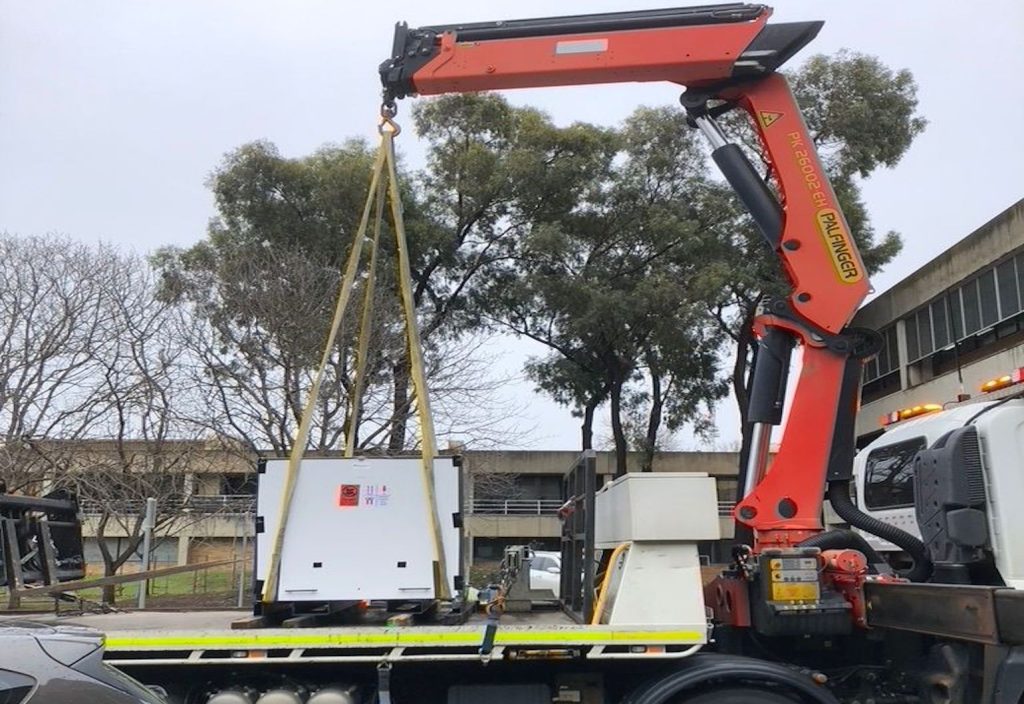Four days into the new year, Canberra-based space services company Skykraft launched a 300-kilogram satellite stack into space. The company’s goal is to make flying safer, more comfortable and dramatically more efficient.
Modern air travel is remarkably safe. Mid-air collisions are rare thanks to modern Air Traffic Management (ATM) surveillance and communication systems. These systems do, however, have an Achilles heel – they require direct line-of-sight to the aircraft.
Once an aircraft disappears over the horizon, the flight crew must constantly report the position of the aircraft so it can be plotted and tracked. If the crew wishes to speak to ATM, they must use high-frequency radios using technology dating back to World War I, complete with a static soundtrack.
If an aircraft hits turbulence, they often have to wait to alter their altitude as ATM must spend time ensuring the change won’t cause a mid-air collision.
On January 4 this year, Canberra-based business Skykraft launched from Florida’s Cape Canaveral a stack of five, proof-of-concept demonstrator spacecraft that will soon help to solve this issue, and more.
“What we’re building is a constellation of satellites that will provide air traffic management services globally,” says Dr Doug Griffin, Chief Engineer at Skykraft.
“Skykraft’s ATM service will be able to track the location of aircraft globally in real-time, and the pilot or flight crew can just push the button on their mic and speak directly with an air traffic controller in Tullamarine.”
How to build a spacecraft
The production of the spacecraft, launched aboard a SpaceX Falcon 9 rocket, was kept as simple as possible whilst also involving highly-complex engineering. Some parts were purchased at Bunnings while others had to be sourced from specialist manufacturers.
“We’re designing a spacecraft to be built economically – 200 of them will form the full constellation,” says Griffin, who also worked on the James Webb Space Telescope, the Herschel Space Observatory and the European Space Agency’s Solar Orbiter.
“We don’t need to build them out of exotic materials. We build them largely out of aluminium, some of which is aerospace aluminium and some of which was cut in Queanbeyan, or Albury Wodonga – the same aluminium that is used to repair tractors.”
What came from Bunnings? Some of the spacecraft’s antenna elements were purchased from the hardware retailer.
In terms of rare materials, certain epoxy glues were sourced from the UK and America. Some stainless steel was also imported, and certain plastics were printed on a high-spec 3D printer designed to work with high-temperature thermoplastics.
“There are some materials that simply aren’t compatible with a vacuum environment or radiation, etc. You can’t have cadmium which is on some connectors. You can’t have tin. You can’t have PVC insulation on wires,” Griffin says.
The most exotic part of the spacecraft is the electronics, he says. But the lack of availability of high-grade electrical circuits, in the current ‘chipageddon’ environment, was a problem.
“We had to change our circuit designs so we could use electrical parts we could source,” he says. “That actually helped reduce complexity, and we continue to look at ways to further reduce complexity. The best component is always no component.”
Get it right – there’s no second chance
Physically, the spacecraft must be perfect before it’s loaded onto the launcher. Obviously, once the launch has occurred, there’s no opportunity to make changes. That’s why the current test runs and proof-of-concept processes are vital.
On-board software, on the other hand, can be updated over the air and in real-time, just as happens with our smartphones.
“We will launch another five spacecraft in June this year, and in the first half of 2024 we’ll launch another eight,” he says. “We want those to be the eight spacecraft that are used to certify the safety case for it to be adopted.”
The launches of the rest of the satellite constellation will occur soon after that. Importantly, each craft is designed to be thrust back into the atmosphere at the end of its five-year life, burning up instead of creating space junk.
“Apart from the ethical side, it just makes good business sense,” Griffin says. “If we pollute the near-space environment, it becomes unusable and breaks our business model.”
